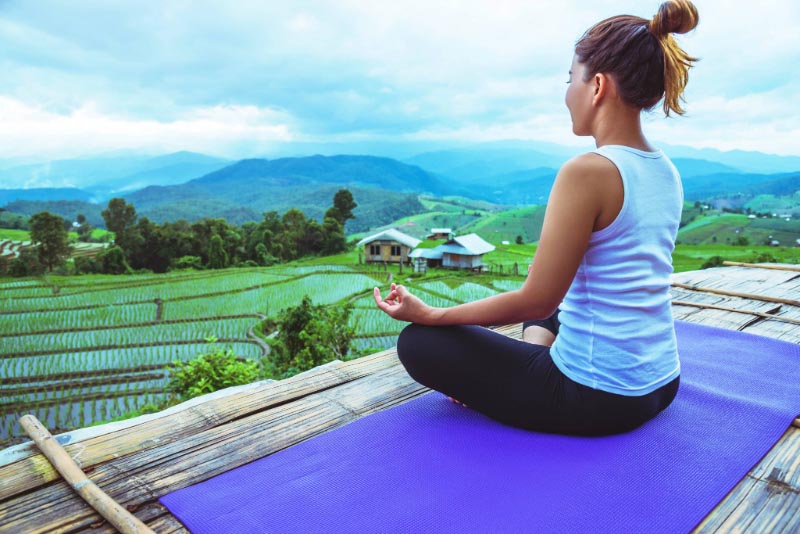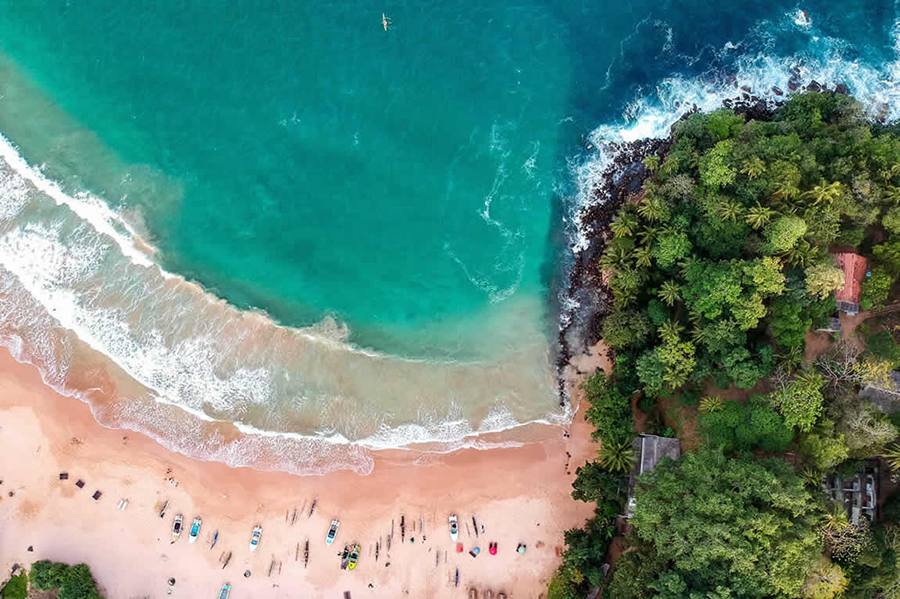A Beginner's Guide to Surfing: Mastering Waves at Your First Surf Camp

Embarking on the exciting journey of learning how to surf can be both thrilling and challenging. Surf camps offer beginner surfers the ideal environment to acquire new skills, meet fellow enthusiasts, and build a strong foundation in the sport. This article aims to provide first-time surfers with valuable tips and tricks to prepare them for their initial surf camp experiences.
- Choosing the Right Surfboard
- Essential Surfing Skills
- Surfing Etiquette and Safety
- Finding the Perfect Surf Spot
- Surf Camps and Surf Schools
- Preparing for Your First Surf Session
- Progressing in Your Surfing Skills
- Beginner’s Guide to Riding Your First Wave: Embracing the Journey of Surfing
Surfing is a multifaceted sport that demands physical strength, agility, and mental focus. With guidance from seasoned instructors and the camaraderie of fellow surfers, beginners can develop the necessary skills and techniques to navigate the waves confidently. Paddling, positioning, and balance are crucial aspects to master before attempting to ride a wave, and understanding the dynamics of the ocean can significantly impact a beginner's progress and safety.
Choosing the Right Surfboard
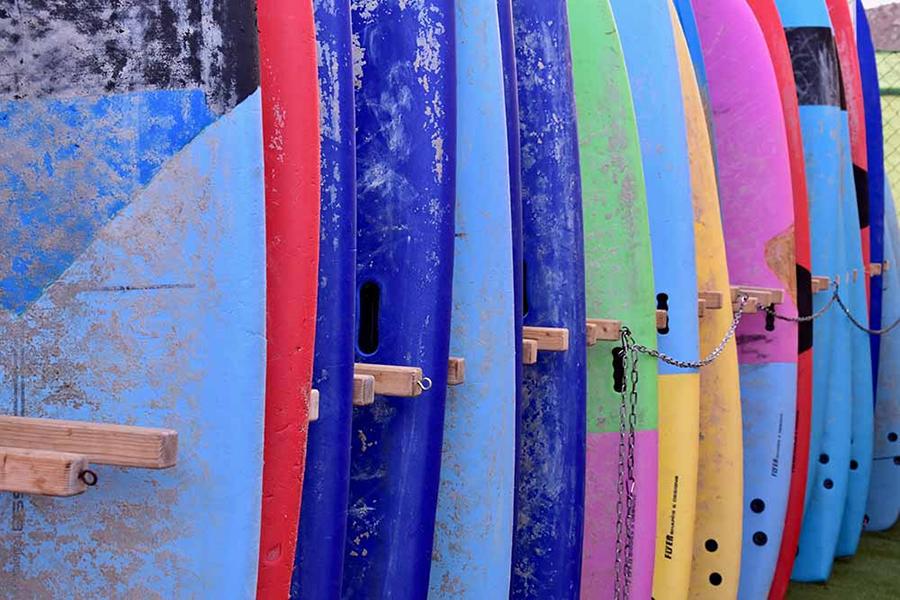
Longboards and Soft-Tops
When starting out at surf camp, it's essential to choose the right surfboard for beginners. A popular choice for those new to surfing is a longboard or a soft-top surfboard. Longboards provide more stability and are easier to catch waves on due to their size and shape. Soft-top surfboards, or foam surfboards, also provide lots of float and stability, making them safer in the lineup. The extra width and thickness, combined with the round nose and wide tail, make standing up on the wave easier for first-time surfers.
Shortboards and Fish
While longboards and soft-tops are great for beginners, more experienced surfers might opt for shortboards or fish surfboards. Shortboards are designed for quick and aggressive maneuvers, but can be harder to balance on and require more skill to ride. Fish surfboards have a wider tail, making them more stable than a shortboard but still offering the ability to perform more advanced moves. As beginners progress, they can transition from a longboard or soft-top to a shortboard or fish, depending on their personal preferences and goals.
Wetsuits and Rash Guards
To ensure a comfortable surfing experience, it's essential to wear appropriate attire like wetsuits and rash guards. Wetsuits provide insulation and protection from the cold water, while rash guards protect the skin from chafing and sunburn. When selecting a wetsuit, it's important to consider factors like water temperature, thickness, and flexibility. Rash guards come in different styles, such as short sleeve, long sleeve, or tank-top, offering varying levels of sun protection.
At surf camps, first-time surfers can often rent or purchase surf equipment, including surfboards, wetsuits, and rash guards, from a local surf shop. With the right type and size of surfboard, along with proper attire, beginners can focus on learning the skills and techniques needed to progress in their surfing journey.
Essential Surfing Skills
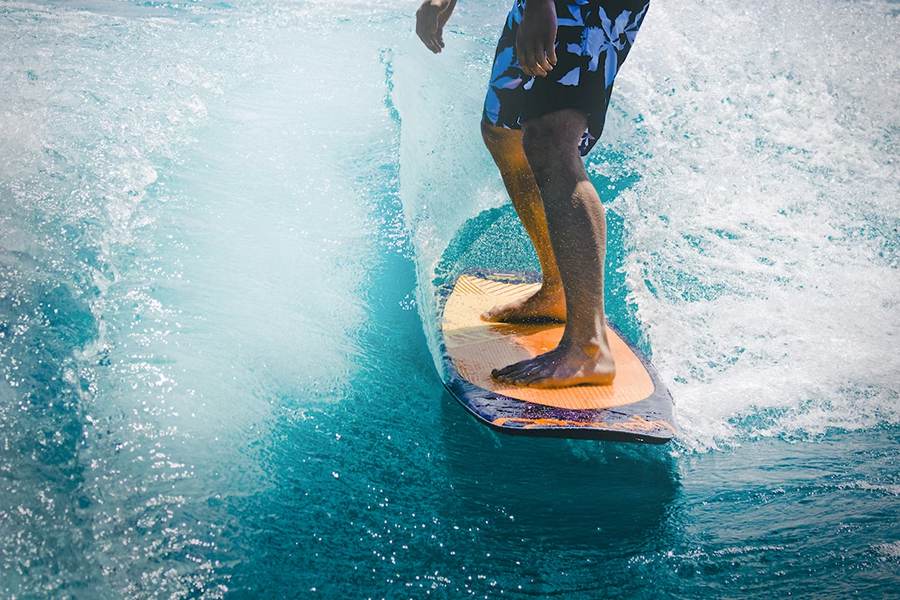
Paddling and Paddling Out
Paddling is one of the most fundamental skills in surfing, as it allows you to move through the water and position yourself to catch waves. Generally, the best way to learn paddling is through practice and experience. It's important to control your board and maintain balance while paddling. To paddle efficiently, make sure to fully extend your arms and cup your hands, entering the water with a slightly bent elbow.
Paddling out is crucial in reaching the lineup, which is where the waves break consistently. In order to paddle out effectively, locate a channel or a gap between breaking waves. Keep in mind that timing and speed are essential while paddling out to conserve energy.
Catching Waves and Positioning
When learning how to surf, catching a wave is essential in experiencing the thrill of the water sport. First, start by catching smaller whitewater waves, as they are easier to control and ideal for beginners. As you progress, you can move on to catching unbroken waves.
Positioning is key when trying to catch a wave. Make sure to be in the right spot, neither too far inside nor too far out. Align yourself with the peak of the wave, maintain balance on your board, and paddle toward the shore. Remember to give right of way to surfers who are already riding a wave or are closer to the peak.
Balancing and the Pop-Up
Before heading into the water, practice your balance on dry land using a balance board or by performing exercises like yoga and stretching. Good balance is crucial when progressing in surfing.
The pop-up is the technique used to go from lying on the board to standing while riding a wave. To master the pop-up, you should first practice it on dry land with your surfboard or on the sand. Simply place your hands flat on the board near the bottom of your ribcage and then quickly push up, bringing your feet under your body into a standing position.
Duck Diving and Turtle Rolling
Duck diving is an essential skill that allows surfers to paddle out through breaking waves. To perform a duck dive, push the nose of the board under the water using your arms while simultaneously bending your front knee and sinking your back foot to submerge the tail of the board. As you pass beneath the wave, use your arms to resurface and continue paddling.
Turtle rolling is an alternative technique used by longboard riders, where the surfer rolls onto their back, gripping their board tightly as the wave passes over them. Each of these techniques requires practice and can be improved by incorporating exercises such as pull-ups in your surf training regimen.
Surfing Etiquette and Safety
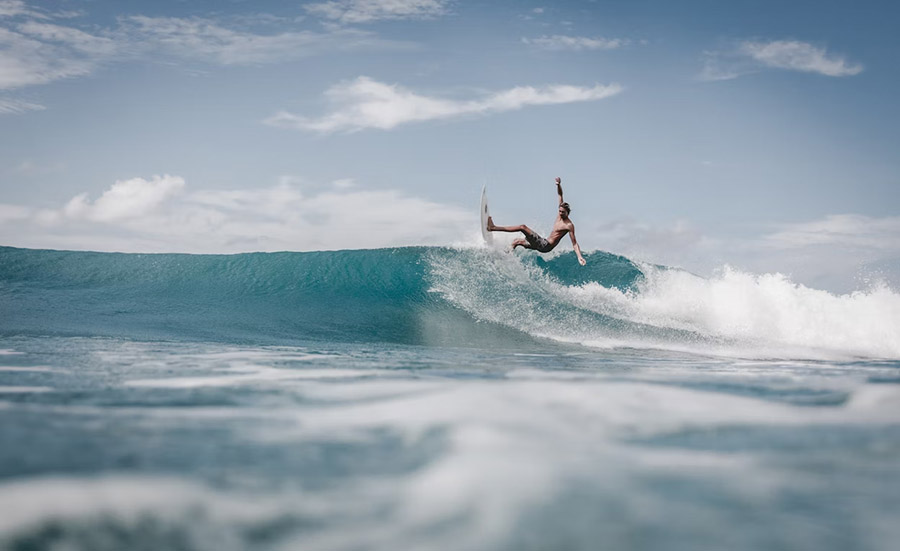
Understanding the Lineup
The lineup is the order in which surfers wait to catch waves. It is essential to understand the lineup's basics to ensure that you are not getting in the way of experienced surfers or causing conflicts. When entering the lineup, always paddle around the side of the wave break to avoid interrupting other surfer's trajectories. If you are at a beach that is suitable for beginners, don't hesitate to ask locals or a local surf shop to help you identify the proper lineup position.
The Right of Way Rule
One of the most crucial surfing etiquette rules, the right of way, dictates who gets to catch a wave. The surfer who is closest to the peak of the wave has the right of way. If you are new to surfing, it's essential to ensure that you are not accidentally "dropping in" on someone who was going for a wave first. Keep a safe distance from other surfers and be aware of your surroundings to minimize the risk of collisions.
Being Respectful and Mindful of Local Surfers
When surfing at beginner spots, it is vital to be respectful of the local surfers who have likely spent years honing their skills in that area. This is not only a matter of respecting their surfing career but also their right to have uncontested access to the waves.
To show your respect, follow these rules:
- Wait your turn in the lineup and observe the right of way rules.
- Don't paddle straight through the lineups of more advanced surfers.
- If you accidentally collide or get in the way of someone, quickly apologize and make sure they are not injured.
Additionally, be aware of the surf conditions and your abilities to ensure that you are not putting yourself or others in danger. It's important not to attempt advanced surf breaks like the pipeline until you have developed a solid foundation of skills.
General Safety and Equipment
When surfing, always wear a leash that connects your ankle to your surfboard. This will prevent your board from getting pushed back to the shore and potentially causing injury to swimmers or surfers. A properly fitting wetsuit can also help keep you warm during low-temperature waters and add buoyancy for increased safety.
Finally, never hold your board between yourself and the waves. If you fall, you should always try to fall flat on the surface of the water, like a leaf, instead of dropping straight down to minimize the risk of injury.
By following these guidelines and respecting the rules, you'll be well on your way to enjoying your first surf camp experience.
Finding the Perfect Surf Spot

Assessing Wave Conditions
For beginner surfers, it's essential to find a surf spot with small, gentle waves. The ideal wave conditions will depend on the specific location, but are often found at particular times of the day or within specific tidal windows. To plan for the perfect surf trip, beginners should learn how to read a surf forecast and familiarize themselves with the tides in the area where they will be surfing.
Key factors to consider when assessing wave conditions:
- Wave size: Beginners should look for waves between 1-3 feet high.
- Wave consistency: A consistent break with evenly spaced waves can make each first session more enjoyable.
- Wave shape: A rolling, crumbling wave is preferred over steep, fast-breaking waves.
Evaluating Bottom and Beach Characteristics
When evaluating the perfect spot for a beginner, it's crucial to examine the beach's layout and the ocean floor's composition. A sandy beach with a gentle slope is ideal for first-time surfers, as it provides a safe and forgiving environment if wiped out. Beginners should avoid locations with rocky bottoms, reef breaks, and steep shorelines. A good beginner's surf spot will include the following:
- Soft, sandy bottom
- Gradual incline
- Clear, obstacle-free shoreline
Surf Camps and Surf Schools
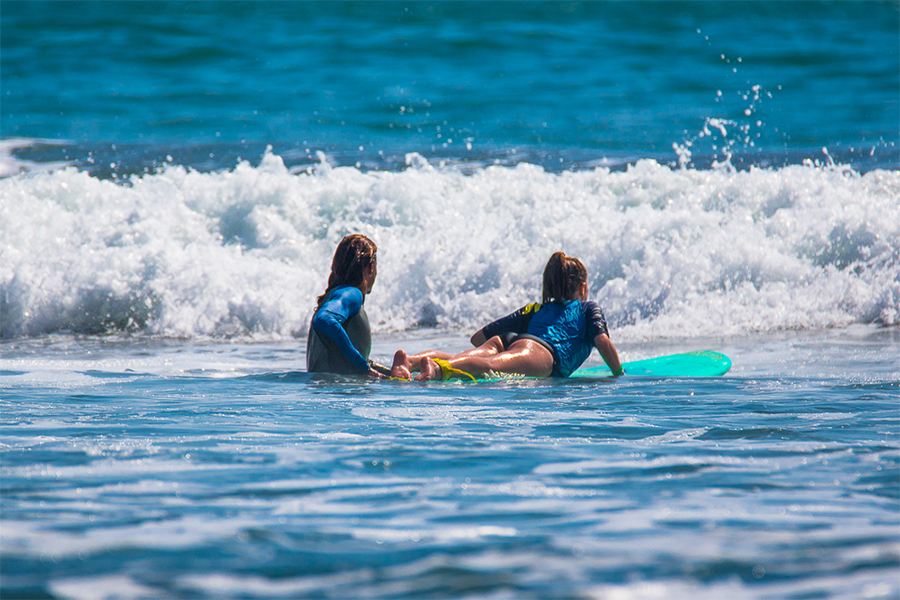
For those looking to jump-start their surfing journey, attending a surf camp or surf school can be a valuable experience. Many beginner surf spots in destinations like California and the Hawaiian Islands also offer surf camps and schools with professional instructors, providing a supportive and structured environment for learning. These establishments often have all the necessary equipment and provide personalized guidance in and out of the water.
When selecting a surf camp or surf school, beginners should consider:
- Reputation and reviews
- Instructor certifications and experience
- Availability of beginner surf spots nearby
- Duration and intensity of programs offered
By carefully considering wave conditions, beach characteristics, and surf camp options, beginner surfers can find an ideal location for their first foray into the world of surfing. This combination of factors will help ensure a positive and enjoyable experience, laying the foundation for a lifelong love of the sport.
Preparing for Your First Surf Session
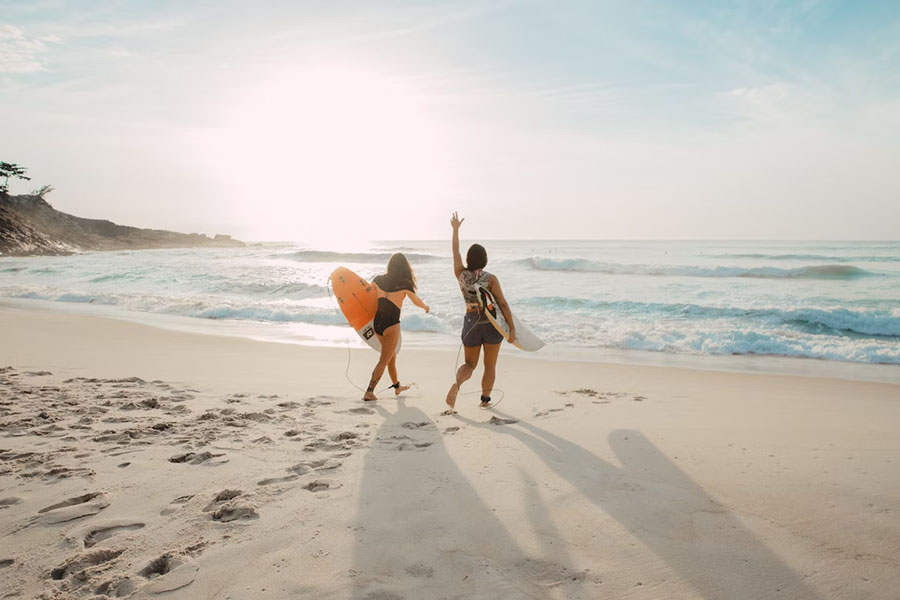
Physical Training
Surfing is a physically demanding sport that requires a combination of strength, balance, and endurance. Before heading out to your first session, it's important to incorporate exercises and activities that focus on building core strength and cardiovascular fitness. Swimming, running, or participating in yoga or pilates classes can help build the necessary muscle groups and improve flexibility, ultimately preparing you for the demands of surfing. Additionally, practicing balance exercises, such as using a balance board, can help you learn how to maintain stability on a surfboard.
Mental Preparation
Mental preparation is just as important as physical training when embarking on your surfing journey. Familiarize yourself with ocean safety, including rip currents, tides, and local marine life, to ensure you are fully aware of potential hazards. Staying calm and confident in the water will help you maintain momentum and face challenges that may arise during your first session. It's important to remember that surfing is a sport that requires patience and persistence, so prepare for possible setbacks and don't be too hard on yourself if you don't master every skill right away.
Appropriate Surf Gear
Selecting the right surf gear is crucial to a successful first session. Start with a big board, such as an egg shape or a longboard, which offers greater stability and allows beginners to catch waves more easily. Ensure that your board has a leg rope, also known as a leash, to prevent losing your board during wipeouts. For beginners, a tri-fin setup is ideal, as it provides a good balance of control and maneuverability.
When it comes to clothing, wear a swimsuit or wetsuit that is comfortable for the water temperature and conditions you'll be surfing in. For safety purposes, it is important to have a life jacket or personal flotation device (PFD) on hand, especially if you're not a strong swimmer.
It's advisable to take surf lessons or attend a surf camp to learn foundational skills, such as paddling, popping up, and riding knee-high whitewater, before attempting to catch bigger waves. Remember, age is just a number, and it's never too late to start your surfing journey. With the right preparation and guidance, you'll be well on your way to embracing the exciting sport of surfing and perhaps even tackling big wave surfing spots like Mavericks in the future.
Progressing in Your Surfing Skills
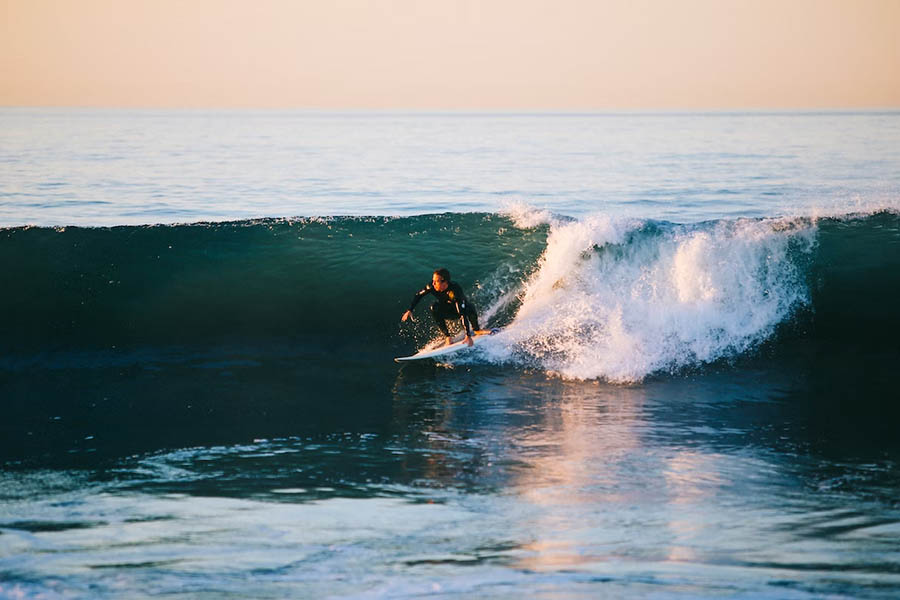
Taking Surf Lessons
Joining a surf camp is an excellent way to learn to surf and improve your skills quickly. Surf camps cater to surfers of all ability levels, and you are likely to find one suitable for beginners.
Surf camps typically provide a comprehensive curriculum including theory lessons, practical exercises, and real-time feedback from experienced instructors. Furthermore, surf camps offer the advantage of having all necessary equipment provided, such as funboards, soft-top longboards, or mini-mal surfboards. Another benefit of attending a surf camp is the opportunity to participate in a surf trip, allowing you to experience various surfing conditions and surf spots while building camaraderie with fellow surfers.
Learning from Experienced Surfers
Surrounding yourself with experienced surfers at a surf camp is an invaluable way to progress your surfing skills. These seasoned surfers can share valuable tips and tricks tailored to your needs, helping you make the most of your surfing sessions. Paying attention to their advice and observing their techniques can greatly enhance your learning experience. Keep in mind that patience is essential when learning from others – remain open-minded, and remember that improvement may not happen overnight.
Pushing Your Comfort Zone
While it's important to know your limits, overcoming fear and pushing your comfort zone are essential aspects of progressing in surfing. Surf camps often encourage surfers to challenge themselves by trying new surf conditions, experimenting with board designs, or attempting more difficult maneuvers. It can be helpful to set goals for yourself during your surf lessons and focus on incremental improvements, such as catching bigger waves or refining your turning technique. As you gain confidence and skill, you'll enjoy a more enriching surfing experience.
Remember to always consider your safety and the surfing conditions when pushing your comfort zone. It is crucial to balance progress with risk management to ensure a positive and rewarding surfing journey.
Beginner’s Guide to Riding Your First Wave: Embracing the Journey of Surfing

In wrapping up, we've designed our "Beginner's Guide to Surfing: Mastering Waves at Your First Surf Camp" to serve as your comprehensive roadmap for navigating the exciting world of surfing. We've guided you through the process of selecting your first surfboard, mastering crucial surfing skills, understanding and respecting surfing etiquette, prioritizing safety, and locating your perfect surf spot.
We've also explored the significant advantages of attending surf camps and schools and provided you with practical tips to adequately prepare for your first surf session and continuously advance your skills. As you set off on this thrilling journey, we urge you to respect the ocean, practice patience, and never let the pursuit of mastery eclipse the joy of the experience.
Remember, surfing is as much about the journey as the destination. Relish every wave, every moment of thrill, and even the inevitable spills - they're all part of the unique surf life that awaits you.
Related Articles
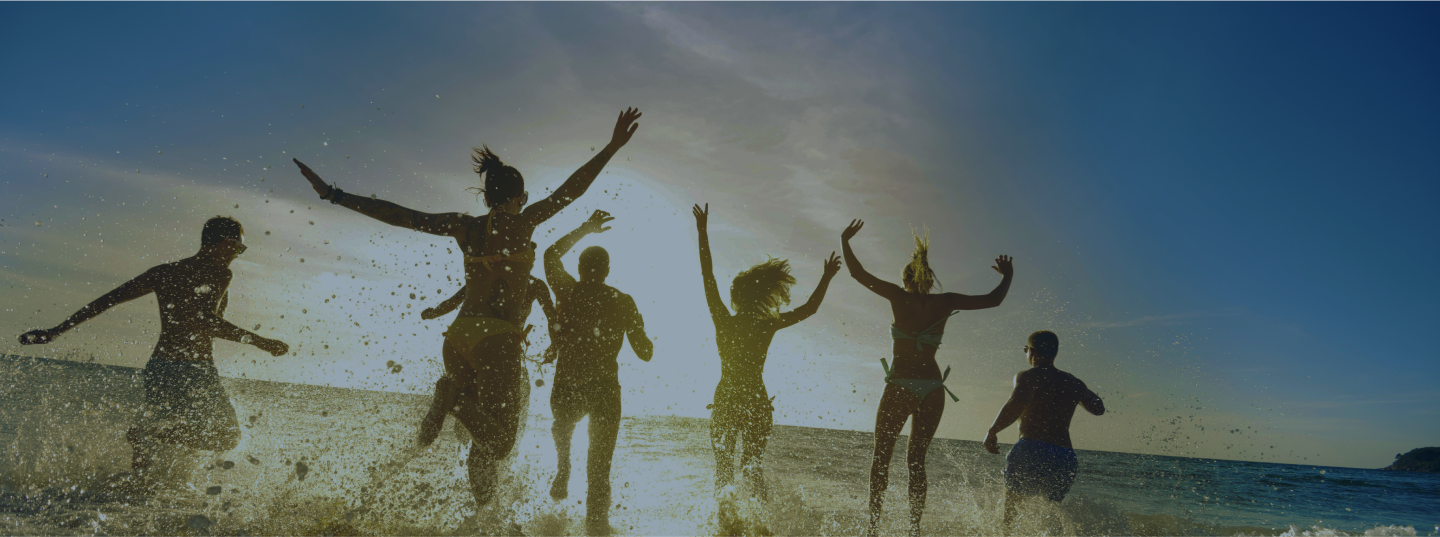
Enjoy a Truly Unique CAMP
Experience With Fellow Travelers
SatoriCamp will match you next vacation with like-minded travelers from around the world.
Find your Camp



